Each flower holds a unique significance in life. Nothing exists without a reason. Join us to explore the origin and meaning of bellflowers in the following article!
1 What are Bellflowers?
Origin and Meaning of Bellflowers
Bellflowers, scientifically known as Campanulaceae, originate from the Northern Hemisphere, spanning from the Mediterranean region to the Caucasus. Today, bellflowers are also widely cultivated on other continents such as Asia, Africa, and America.
Bellflowers captivate people’s attention with their profound symbolism, including:
- A symbol of gratitude and appreciation for a favor.
- Bringer of good luck and a prosperous career.
- Representing eternal life alongside the beauty of a dreamy youth.
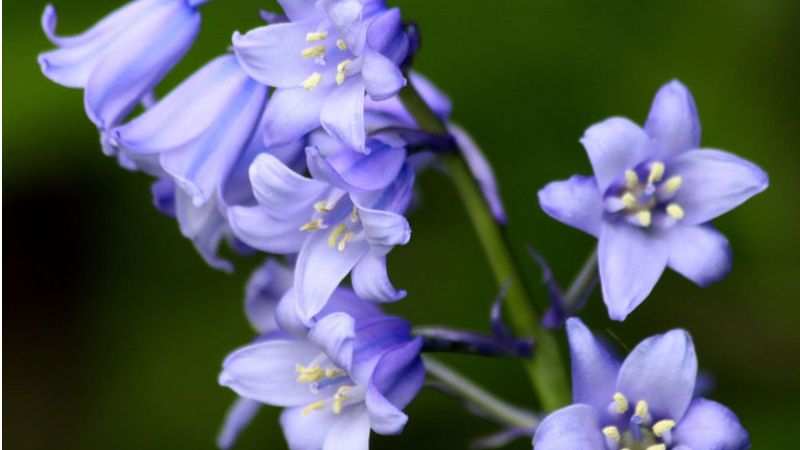 Origin and Meaning of Bellflowers
Origin and Meaning of Bellflowers
Characteristics and Classification of Bellflowers
Bellflowers are herbaceous plants with roots that remain bundled and firmly anchored in the ground. When bellflowers bloom, they droop and dangle in clusters of 10 to 15 flowers, resembling ringing bells.
Bellflowers are classified based on their distinctive colors, including , , yellow bellflowers, and pink bellflowers. In Vietnam, you can find these species in the city of Da Lat.
 Characteristics and Classification of Bellflowers
Characteristics and Classification of Bellflowers
2 Benefits of Bellflowers
Health Benefits
In both Eastern and Western medicine, bellflowers are used to treat various common ailments, including:
- Skin healing: The allantoin present in bellflowers stimulates the development of the epidermis and soothes wounds.
- Pain relief: Bellflowers can reduce joint inflammation, sprains, and back and disc pain.
Beauty Benefits
In addition to their health benefits, bellflowers are also used in cosmetics due to the presence of allantoin, which offers the following advantages:
- Anti-aging: Recent studies indicate that bellflowers help prevent skin aging and effectively reduce wrinkles.
- Moisturization: Deeply nourishes and hydrates the skin, making it supple and soft.
- Exfoliation: Removes the horny layer of the skin and soothes skin irritations.
Culinary Uses
Bellflowers are considered a valuable herbal remedy. Given their benefits, they are often used to make tea to treat pneumonia, cough, chest pain, and women’s menstrual issues.
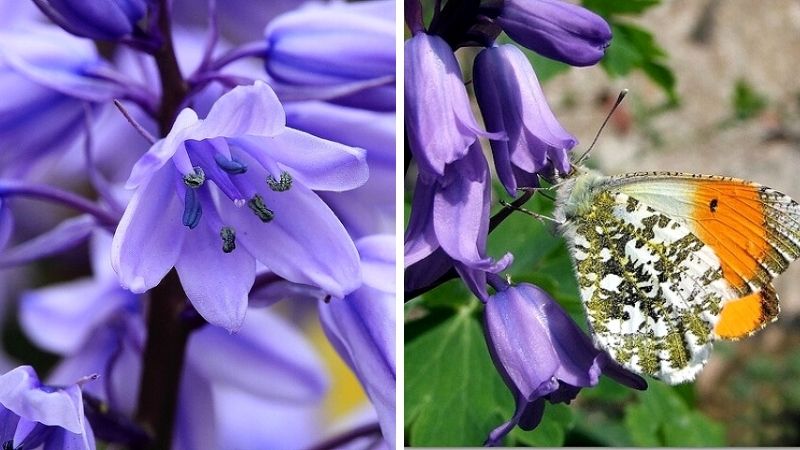 Benefits of Bellflowers
Benefits of Bellflowers
3 How to Grow and Care for Bellflowers
Growing Bellflowers at Home
To successfully grow bellflowers at home, you must apply certain techniques and consider the following essential factors:
- Soil: Opt for loamy soil containing organic compounds from peat moss, organic fertilizer, and coconut fiber or husk.
- Seeds: For large seeds with thick shells, soak them in warm water for a few hours before direct sowing. Smaller seeds can be sown without soaking.
- Propagation method: Bellflowers can be propagated by seed, cutting, or root division, typically done in late winter or early spring.
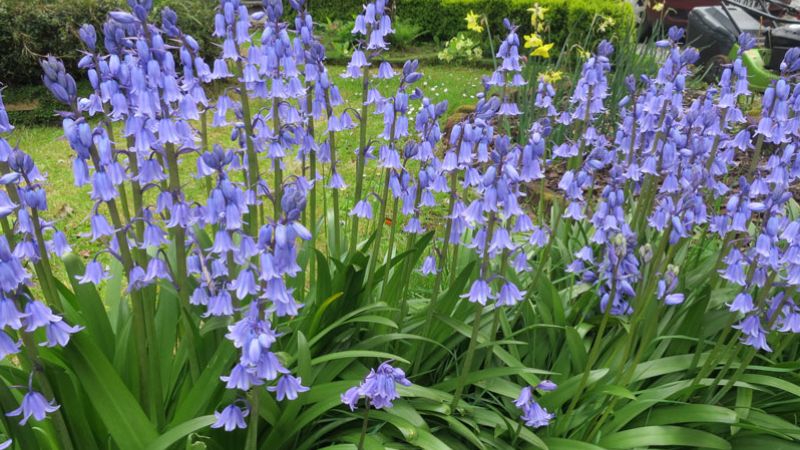 Growing Bellflowers at Home
Growing Bellflowers at Home
Caring for Bellflowers
At the seedling stage, bellflowers are often grown through tissue culture in small cups with an appropriate soil mixture. After 15 to 20 days of development, the seedlings should be transplanted into larger pots.
- Watering: Regular morning watering prevents plant diseases. Use mist or drip irrigation to maintain adequate moisture for the plant’s growth.
- Light: Choose a spot in your home that receives gentle morning sunlight. From 2 pm to 4 pm, you can supplement with fluorescent lighting.
- Temperature: Bellflowers thrive in cool temperatures. Maintain daytime temperatures between 22°C and 25°C, and 18°C to 20°C at night.
- Fertilizer: For plants under one month old, provide them with Growmore trace element fertilizers. When the plant is over one month old and about to bloom, use growth stimulants like Muti-K, Atonik 1.8 DD, and Calcium Nitrate.
- Pruning, leaf, and bud removal: Pinch off the first two buds when they change color. Remove wilted leaves and flowers, and separate wilted flowers from the flower bed.
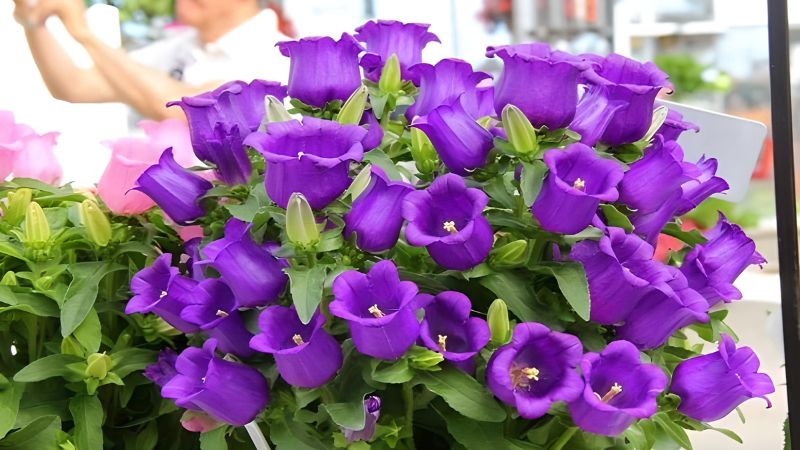 Caring for Bellflowers
Caring for Bellflowers
4 Notes on Growing and Caring for Bellflowers
When watering, avoid spraying directly on the plant, as it may hinder its growth. Simply mist the air above the plant, and when the flowers bloom, water the base of the plant.
Increase liquid fertilizer application to once a week when you notice the flowers starting to bloom.
Use insecticides like Supracide 40 EC and Kelthane 18.5 EC to eliminate mealybugs and other leaf-eating insects.
When propagating through root division, opt for younger roots, ideally from 3-year-old plants, to increase the chances of successful germination.
 Notes on Growing and Caring for Bellflowers
Notes on Growing and Caring for Bellflowers
5 8 Beautiful Bellflower Images
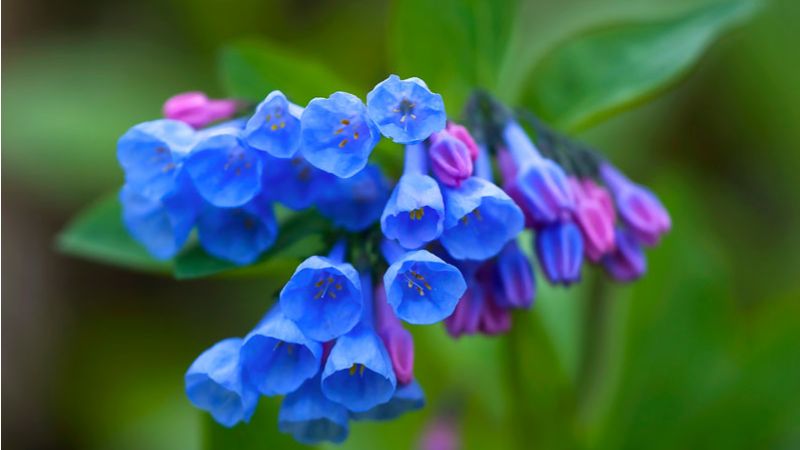 Bellflowers in Serene Green
Bellflowers in Serene Green
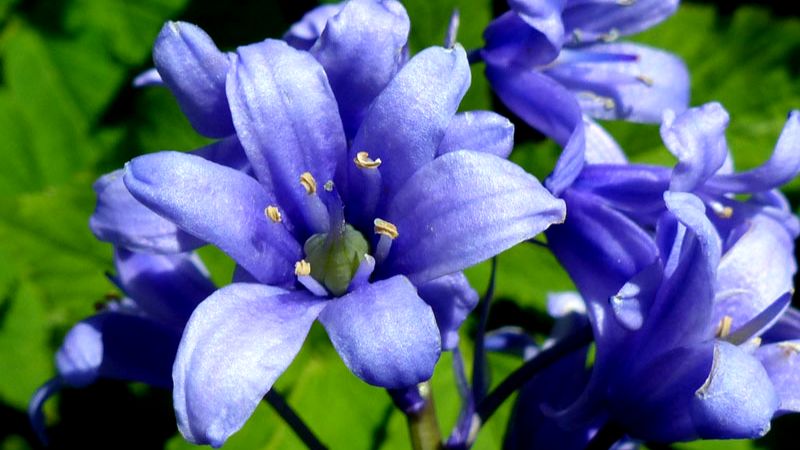 Bellflowers with Vibrant Yellow Stamen
Bellflowers with Vibrant Yellow Stamen
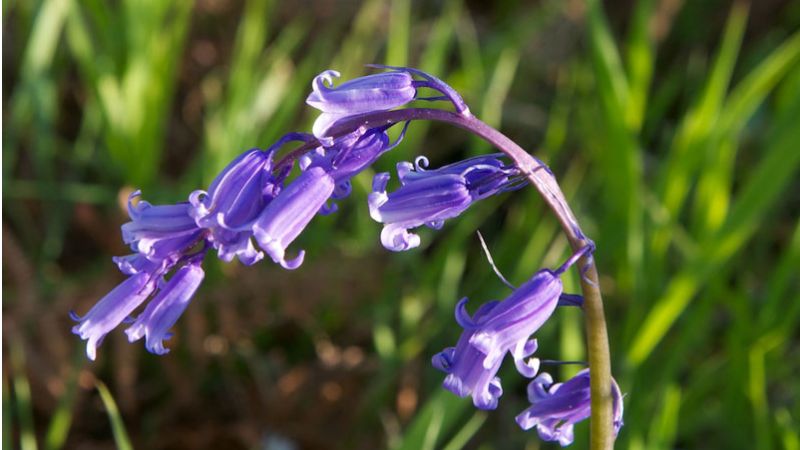 Bellflowers Thrive with Optimal Light, Temperature, and Humidity
Bellflowers Thrive with Optimal Light, Temperature, and Humidity
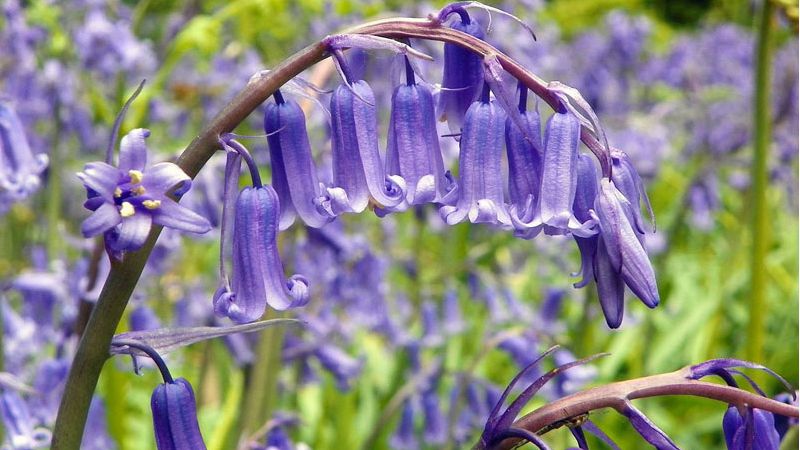 Bellflowers Blooming in Clusters
Bellflowers Blooming in Clusters
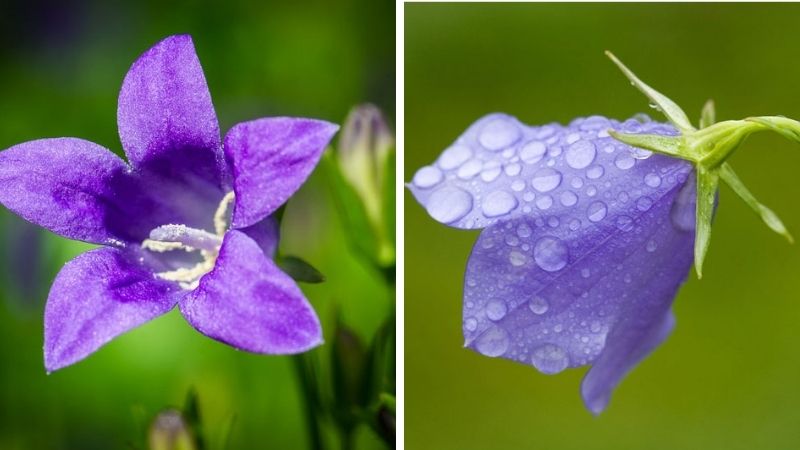 Bellflowers Prefer Cool Climates
Bellflowers Prefer Cool Climates
 Bellflowers Should Be Watered in the Early Morning
Bellflowers Should Be Watered in the Early Morning
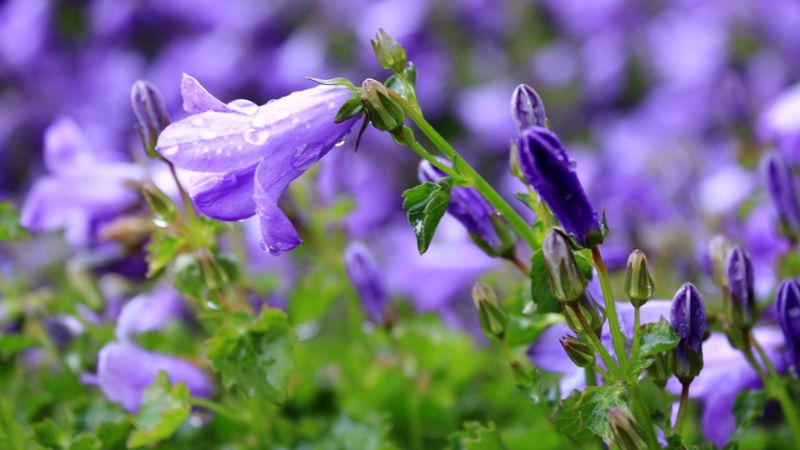 Bellflowers Symbolize Gratitude, Luck, and Immortality
Bellflowers Symbolize Gratitude, Luck, and Immortality
We hope you found this article informative and that it inspires you to grow your own beautiful bellflowers!




































